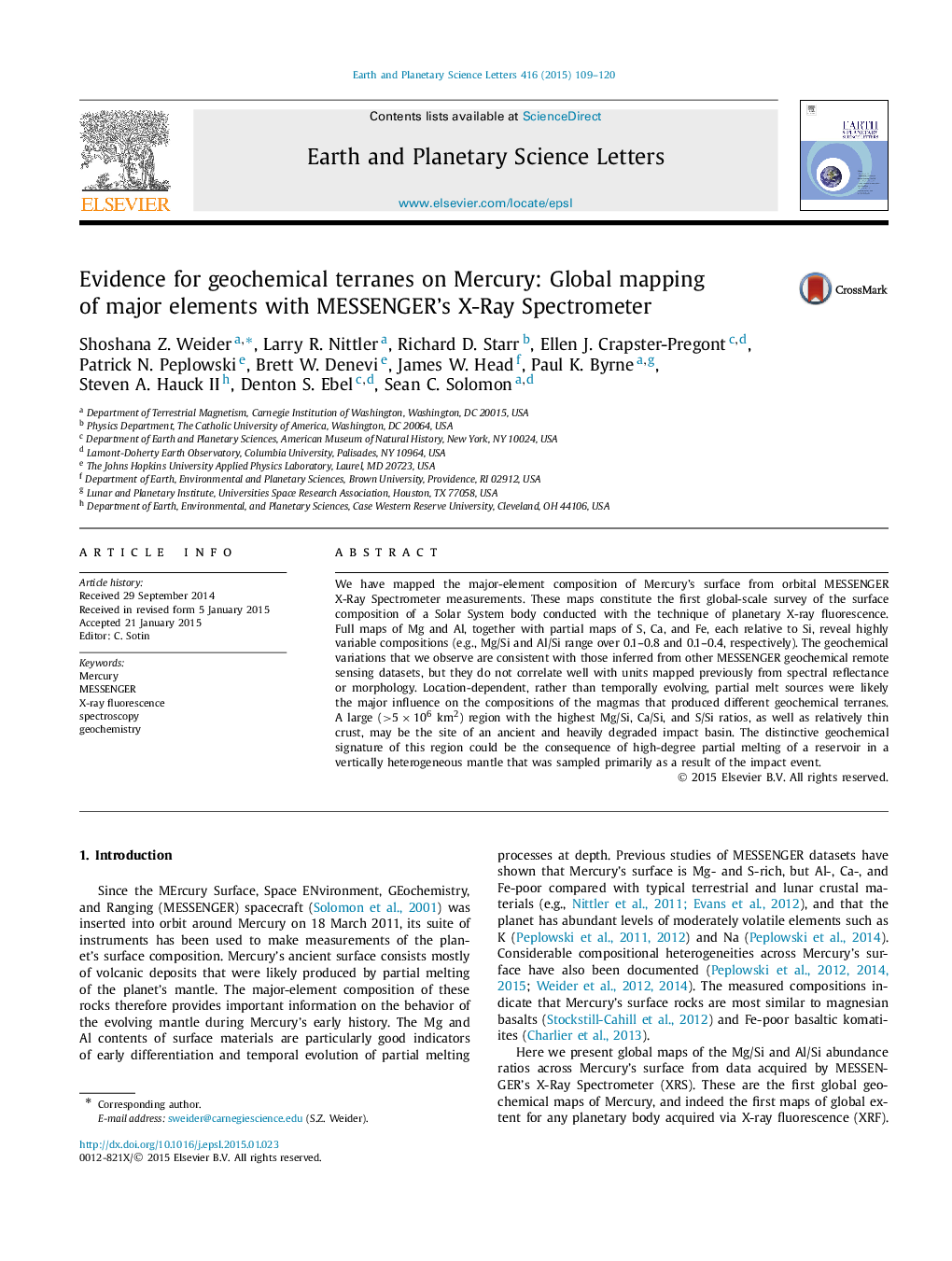| Article ID | Journal | Published Year | Pages | File Type |
|---|---|---|---|---|
| 6428528 | Earth and Planetary Science Letters | 2015 | 12 Pages |
â¢MESSENGER X-ray Spectrometer data used to produce global Mg/Si and Al/Si maps.â¢Major-element variations define large-scale geochemical terranes on Mercury.â¢Chemical heterogeneities do not match units mapped from morphology and color.â¢A heterogeneous mantle likely gave rise to the surface compositional variations.
We have mapped the major-element composition of Mercury's surface from orbital MESSENGER X-Ray Spectrometer measurements. These maps constitute the first global-scale survey of the surface composition of a Solar System body conducted with the technique of planetary X-ray fluorescence. Full maps of Mg and Al, together with partial maps of S, Ca, and Fe, each relative to Si, reveal highly variable compositions (e.g., Mg/Si and Al/Si range over 0.1-0.8 and 0.1-0.4, respectively). The geochemical variations that we observe are consistent with those inferred from other MESSENGER geochemical remote sensing datasets, but they do not correlate well with units mapped previously from spectral reflectance or morphology. Location-dependent, rather than temporally evolving, partial melt sources were likely the major influence on the compositions of the magmas that produced different geochemical terranes. A large (>5Ã106 km2) region with the highest Mg/Si, Ca/Si, and S/Si ratios, as well as relatively thin crust, may be the site of an ancient and heavily degraded impact basin. The distinctive geochemical signature of this region could be the consequence of high-degree partial melting of a reservoir in a vertically heterogeneous mantle that was sampled primarily as a result of the impact event.
